Kurokesu C2 camera compared to four other webcams
Part I: Overview
Like many others, at the beginning of the COVID19 pandemic, our fitness and training group shifted from teaching in-person classes held in gyms and studios to online “virtual” classes from home studios or living room spaces. We soon found that most webcams are not well-suited to running exercise classes in confined spaces. Most webcams have a very limited field-of-view that is not wide enough to record a clear image from floor to ceiling so that the instructor’s entire body is visible.
Disappointed with the results from most cameras, we set off on a search for a webcam that could address our needs.
Between January 2021 to July, we tested the five webcams: Kurokesu C2, Logitech C920, Logitech C930e, Mokose U70, and the ELP USBFHD06H-SFV. All were tested for suitability for video streaming of exercise, martial arts, and dance training courses.
Perhaps it is no surprise that the Kurokesu C2, as the most costly of these cameras, offered unbeatable performance. Kurokesu is a company based in Lithuania that designs computer vision technology. Their first camera, the C1 was widely praised online by fans who used this industrial camera as a webcam. By the time I learnt about Kurokesu’s specialty cameras and custom-designed equipment, the company had just released their upgraded C2 model. I purchased the C2 camera, a 2.8 to 12mm zoom lens, and a 2.11 mm M12 mount wide angle lens.
This section of the review “Part I: Overview” provides an overview of the five cameras and our rankings. If you’d like more detailed information on each camera and would like to examine screenshots, please see “Part II: The Details”.
Here are our overall test findings.
#1. Overall, the Kurokesu C2 is the undisputed winner. The most expensive of the cameras, the C2 is also the smallest and has the best build quality. Most importantly, it delivers the best image quality and low light performance. None of the other cameras provide image quality approaching that of the C2. The C2’s ability to use a vast range of CS-mount, C-Mount, and M12 mount lenses allows the C2 to be used for a wide range of photographic purposes. In short, if you want the best small camera for online courses, buy the Kurokesu C2.
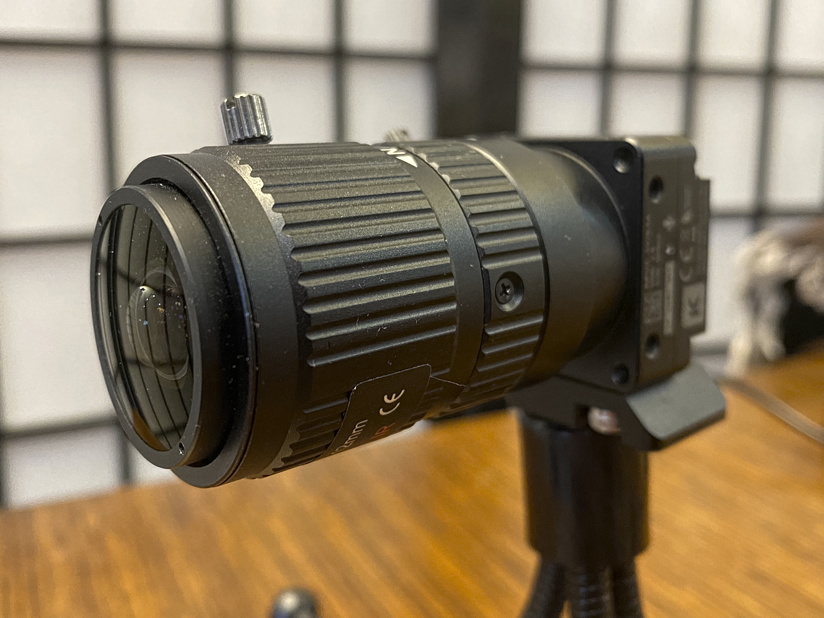
#2. The ELP is capable of providing very good image quality when the camera has plenty of light. ELP lens mount is compatible with a vast range of CS-mount, C-Mount, and M12 mount lenses, thereby making the camera highly versatile. The ELP is ranked as #2 on our list because the camera’s low cost and its potential to provide high quality images when enough light is provided. It ranks above the Mokose because it is far less expensive, and did not suffer from quality or lens problems.
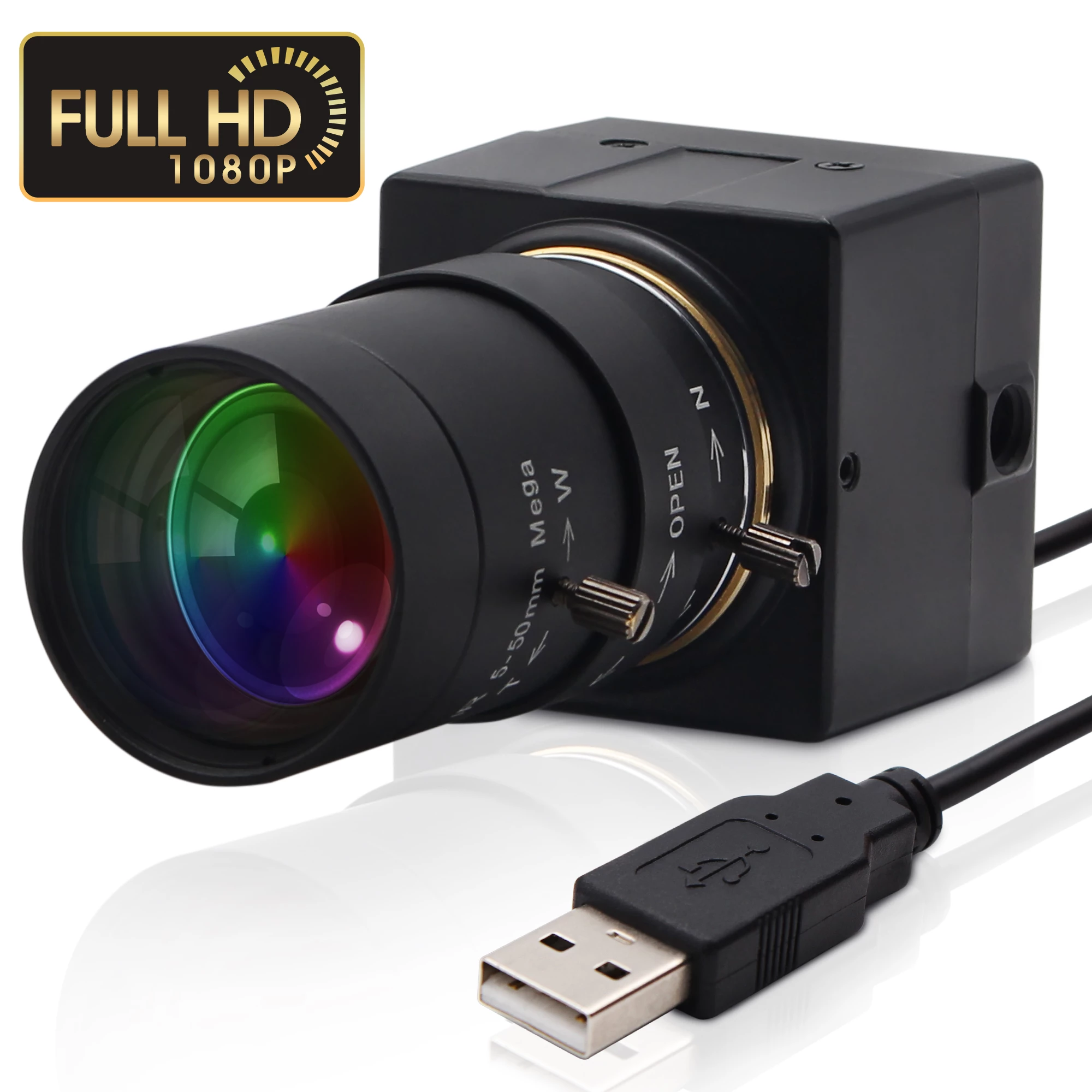
#3. Mokose U70 features a very large sensor that provides 4K resolution and has decent low-light performance. With plenty of light, the U70 can provide very good image quality. However, in our opinion, low light performance is more important, and in this regard, the U70 was only fair. The U70 sinks to position #3 because of quality problems and the company’s use of a mismatched lens that does not allow full use of the lens’s wide angle capabilities. Also, we feel that in 2021-22, very few people require 4k resolution for online classes or video calls.
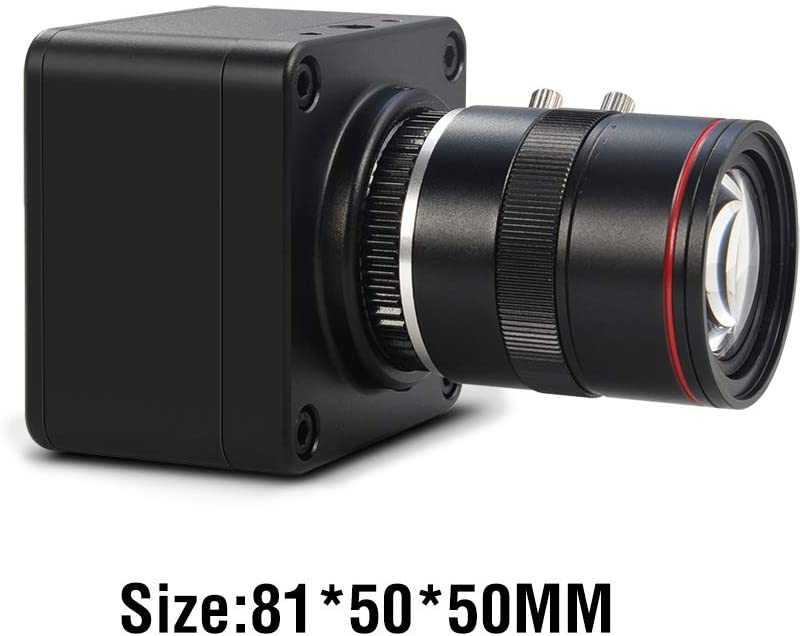
#4. Logitech C930e, which features a wide-angle lens, provides very good video performance and offers decent sound for most uses. Low light performance is better than the ELP and the Mokose, but it cannot match the clarity of either when lighting conditions are ideal. For us, the C930’s wide angle lens was not nearly wide enough to film in our confined space.
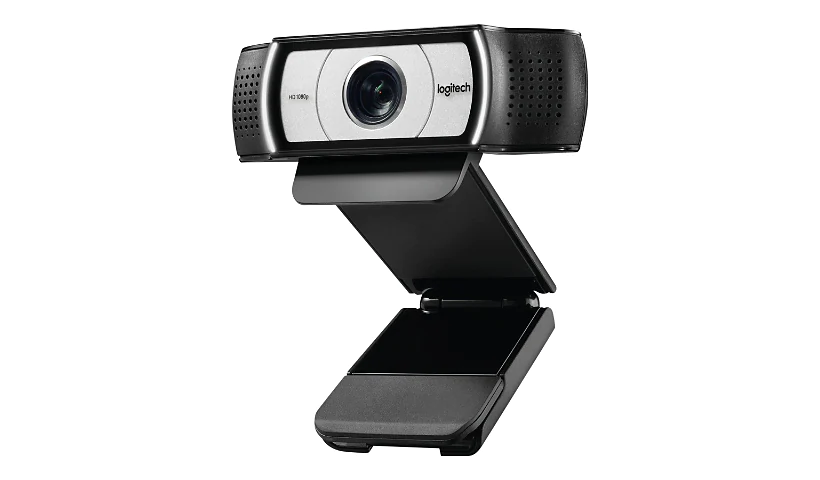
#5. The Logitech C920 is remains a good choice for many people. However, it only performs well when it has bright lighting. If you require a wide field of view for teaching online exercise classes, the C920 is unsuitable. If you want it for web conferencing and chatting only, the C920’s narrow field of view will suffice.
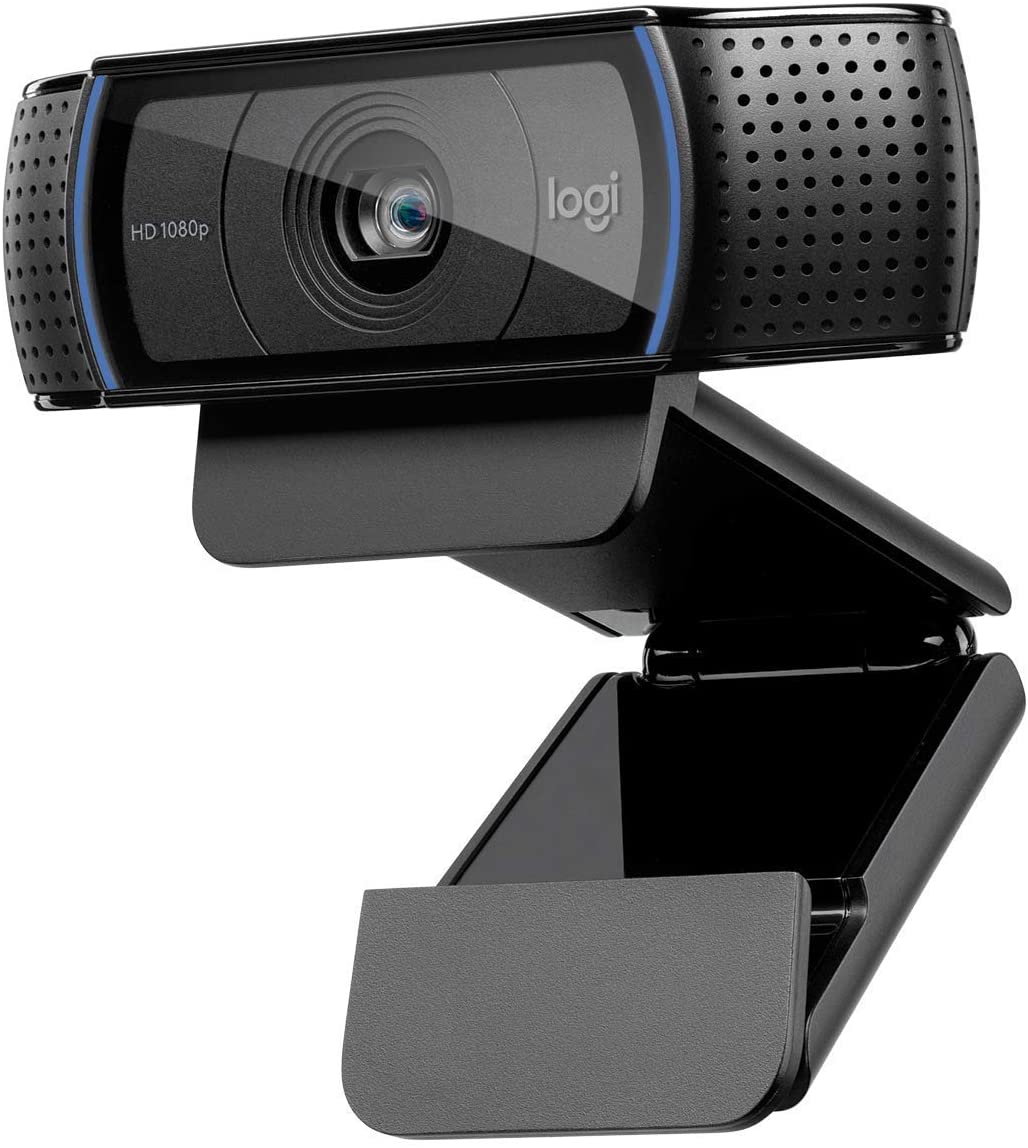
Ranking Chart
|
Colour |
Clarity/Sharpness |
Low-light |
Build quality |
Total |
|
|
Kurokesu C2 |
10 |
10 |
10 |
10 |
40 |
|
ELP |
8 |
8 |
7 |
8 |
31 |
|
Mokose U70 |
8 |
9 |
6 |
6 |
29 |
|
Logitech C930e |
6 |
8 |
6 |
6 |
26 |
|
Logitech C920 |
6 |
6 |
4 |
6 |
22 |
Part II: The Details. Notes on each of the cameras
Kurokesu C2
Resolution: 1920 x 1080
C2 camera price: 178 Euro ($255 CAN)
https://www.kurokesu.com/shop/featured/C2_USBC_MIC
CS-mount 2.8 to 12mm zoom lens price: 49 Euro ($72 CAN)
https://www.kurokesu.com/shop/lenses/L059-FZA-2.8Z12-CS
M12-mount L102-2.11 mm wide angle lens with IR filter 29 Euro ($41 CAN)
https://www.kurokesu.com/shop/lenses/L102-2.11-M12
Tripod Arca-Swiss mount plate for C2 camera 18 Euro ($26 CAN)
https://www.kurokesu.com/shop/mounting/QR_PLATE_20
Total: $394 Can
The Kurokesu C2 is the best web camera we have tested. Designed as a “machine vision” camera, it can be used for many applications. We were very satisfied with its performance especially when paired with the CS-mount 2.8 to 12mm zoom lens that offers excellent optical performance and a good zoom range. At its widest setting of 2.8, the field-of-view is wide enough to cover the teaching space in the room, and when we need tighter shots, the 12mm zoom offers plenty of telephoto range. The camera’s low light performance is very good. The camera sits under the television and 2 metres (7 feet) away, but can display a width of 4 metres (13 feet)- enough to encompass us standing anywhere on the entire living room floor.
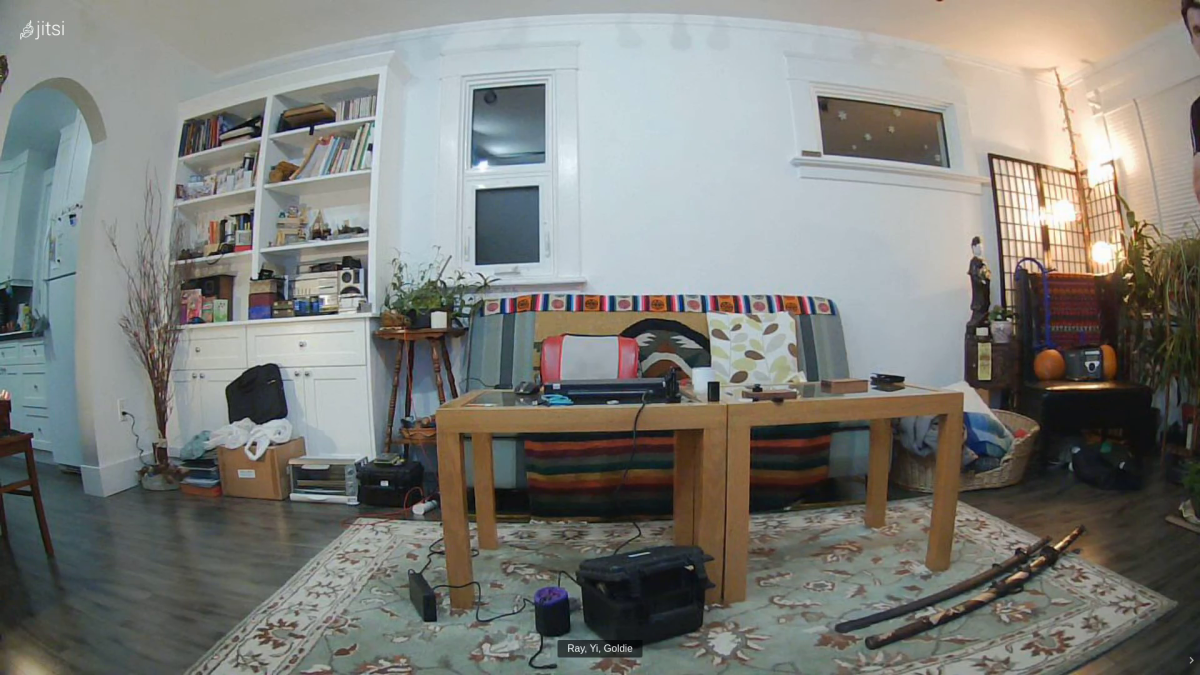
Positive aspects:
The camera accepts CS, C, and M12 mount lenses. Build quality of the camera is unparalleled- the camera body is machined aluminum and well-finished. The camera is labelled with the camera’s serial number (mine is labelled “00002”!) and “Made in Lithuania” which inspires confidence. The C2 is significantly smaller than all of the other cameras.
Because the C2 quality and performance were the top of the range of all cameras tested, it stands as the benchmark against which the other cameras were compared. For this reason, the C2 ranks as “10” across all categories of Colour, Clarity/Sharpness, Low-light, Build quality.
Negative aspects:
The C2 is by far the most expensive of all of the cameras tested. Though the C2 has built-in digital microphones, I was as not able to obtain useful sound from the mics. The proprietor of Kurokesu, Saulius Lukse, noted that my camera may have a defect in the hardware or firmware. Saulius noted that while the internal microphones on the C2 normally yield acceptable sound, the audio path and is “far from optimal” but that at lease “some audio is better than nothing”. (NOTE: please see my update below) I look forward to testing the audio on a later production release of the C2. The C2 that I received was an early production model, and in fact is stamped with the serial number “0002”!
UPDATE 2023 July!
Kurokesu sent me a new C2 camera after noting that the C2 that the original “pre-release” C2 that I received in 2021 had defective microphones. I am pleased to report that the new C2 camera functions perfectly and offers decent sound quality- far better than I expected! While the sound quality does not match the quality from the Logitech C920, it is far superior to the ELP-USBFHD06H-SFV.
In our tests, we used both the CS-mount 2.8 to 12mm zoom lens and the M12 fisheye for streaming our online courses. We found the M12 to be too wide- it distorts the image slightly too much. Also, the image quality of the M12 fisheye is rather muddy and blurry in comparison to the CS-mount 2.8 to 12mm zoom lens, which is sharp and bright. You may have better luck with the M12 fisheye.
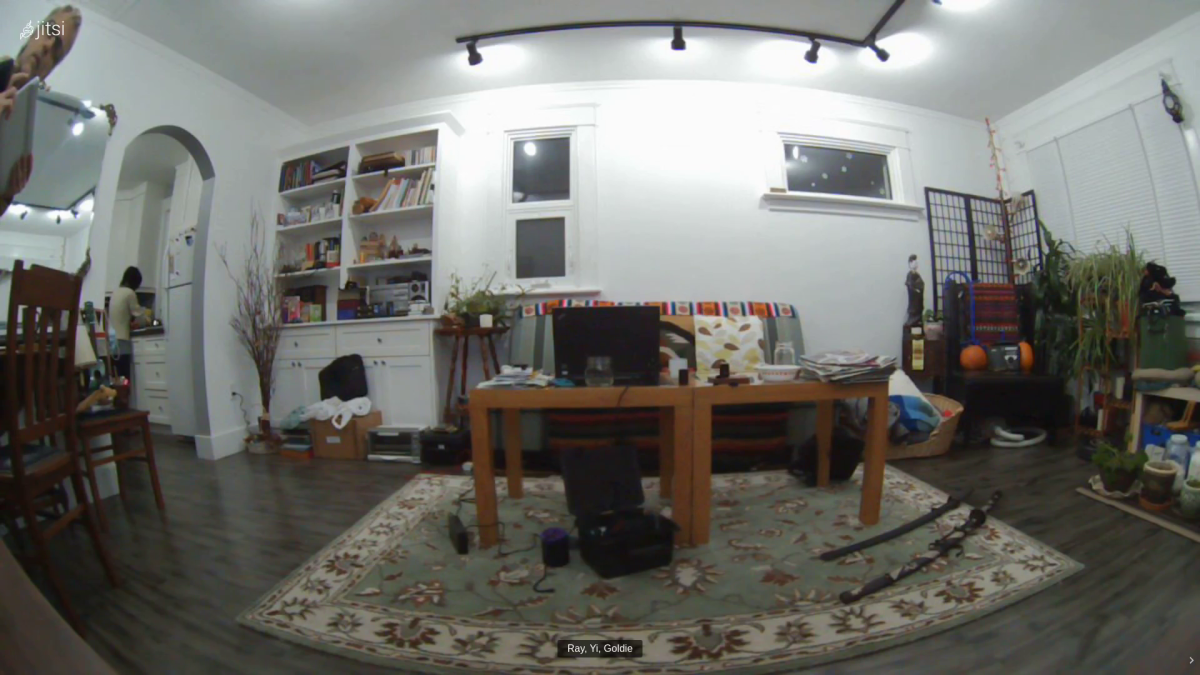
Clarity and low light:
The C2 delivers image quality and low light performance that is clearly superior to all of the cameras tested.
Logitech C920
Resolution: 1920 x 1080
Price: $99 CAN
Positive aspects:
This camera offer an inexpensive way to achieve good quality video with decent audio. It is readily available in local stores (buy locally where possible) or online. Because hundreds of reviews have been written about the C920 since it was first released in 2012, we will provide only an brief summary of the C920 with respect to the other largely unknown cameras that we tested.
In general, the C920 can produce excellent quality images when sufficient light is available, a fact that has earned the camera a large fan base. Many professional streamers on Youtube etc rely on the C920 as their main camera, or as a secondary b-cam.
The camera has a robust plastic body and glass lenses. Though many users complain about the sound quality, we find it generally satisfactory for 1:1 chats. During online exercise classes in which we are quite far from the mic, we rely on an external microphone. The C920 has onboard H.264 compression which reduces the computational load on a computer’s CPU and thus minimizes the use of system resources. The C920 has an autofocus lens which is very useful when using the camera for close 1:1 chats in which case the camera’s aperture is large enough to blur the background to some degree and thereby highlight the subject in focus.
Negative aspects:
The lens cannot be changed.
The 78 degree field of view lens on the camera is not wide enough to film online exercise classes in a confined space. During the pandemic, people attending our online exercise classes are participating from home and require a floor-to-ceiling video image in order to see the exercise movements clearly. In our living room, the C920 lens can only show a small portion of the room at a time. This makes the camera unsuitable for filming exercises classes in confined spaces.
Clarity and low light:
The low-light capabilities of the camera (LowLight-4) are not as strong as the Mokose (LowLight-6 ), ELP (LowLight-8) or the Kurokesu C2 (LowLight-10). Image sharpness and clarity were satisfactory in the centre area of the picture, but objects on the edge of the image were indistinct and blurry. The image below shows a lack of clarity of the plant beside the sofa and the stereo on the shelf. For this reason, we ranked the C920 as Clarity-6 .
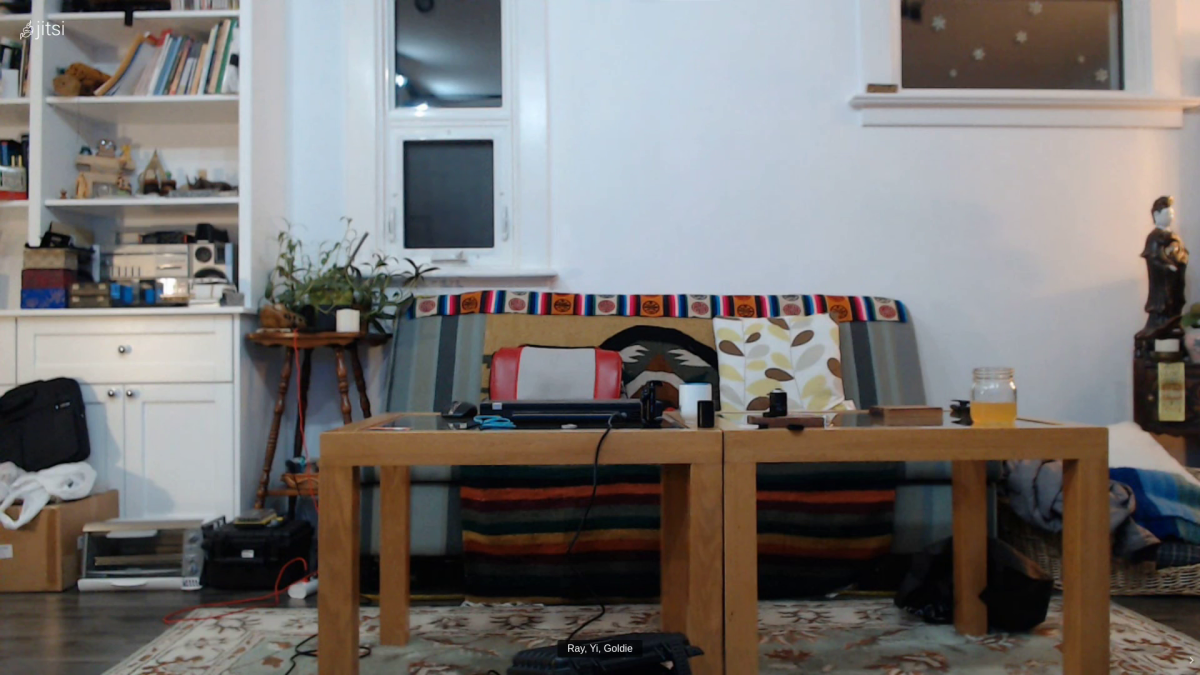
Logitech C930e
Resolution: 1920 x 1080
Price: $99 CAN
Positive aspects:
The C930e looks almost identical to the C920 but offers overall better picture. The sound quality is also superior to the C920. The C930e comes with a privacy cover that can covers the lens when the camera is not in use. Its nice to have this physical cover over the lens to protect it.
Negative aspects:
The lens cannot be changed
The lens offers a 90 degree field of view lens that is significantly wider than the 78 degree FOV of the C920. The wider angle 90 degree FOV lens allows for for greater range of uses. If I need to show more of the room, I place the camera further away, but we want tighter framing, I’ll move the camera close. Nonetheless, the 90 degree FOV is not wide enough to film exercise classes in the confined indoor space available to us.
Clarity and low light:
The low-light capabilities of the C930e (LowLight-6) are slightly better than the C920 (LowLight-4).
Overall image quality of the C930e (Clarity-8) is better than the C920 (Clarity-6) as well and our test video showed quite good edge-to edge sharpness across the image. In the C930e screenshots, note how the overall clarity of the plant beside the sofa and the stereo on the shelf is noticeably superior to that of the C920.
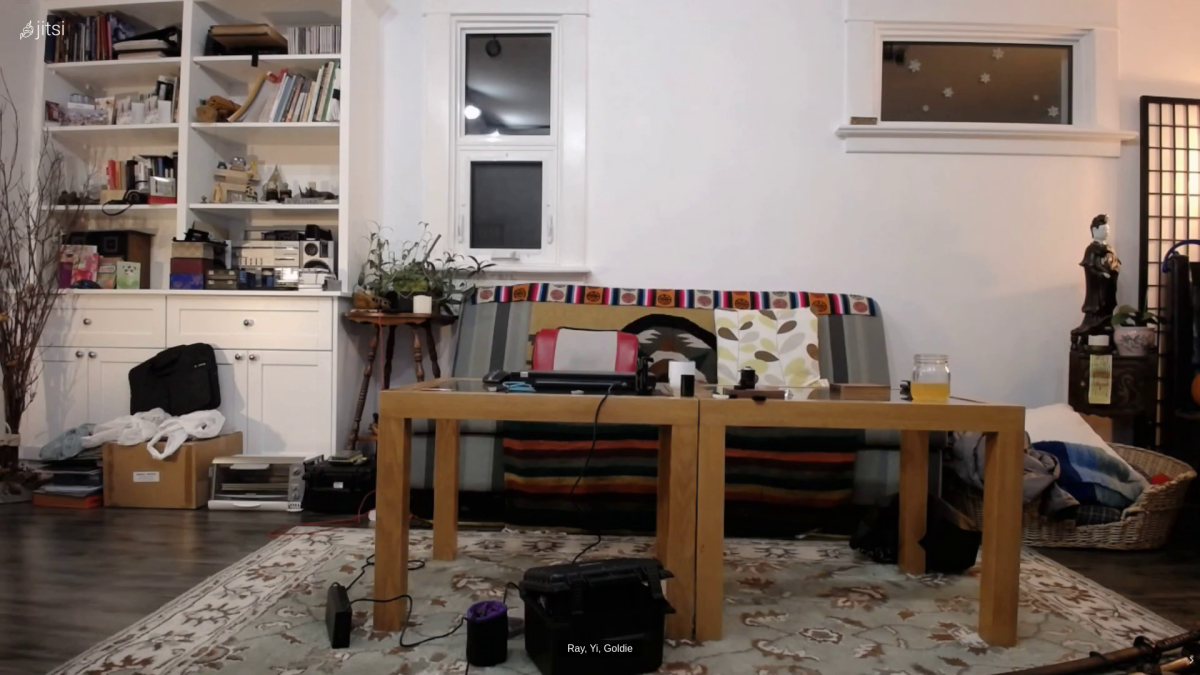
ELP-USBFHD06H-SFV
Resolution: 1920 x 1080
https://www.aliexpress.com/item/32782421627.html?spm=a2g0o.cart.0.0.5ac93c00LHAT09&mp=1
Price: $80 CAN ($64.55 USD)
Positive aspects:
The camera accepts CS, C, and M12 mount lenses. If you use C-mount lenses, you will need to use an adapter ring. To learn more about C, C-S, and M12 mount lenses here: https://commonlands.com/pages/lens-mounts-101 and here: https://www.back-bone.ca/support/ribcage-lens-buying-tips/
The camera is reasonably priced and works well. Compared with the Logitech C920, the ELP’s overall image quality is superior. ELP images are sharper, less compressed, have better colour rendition, and
offers slightly better low-light performance. We ranked the ELP as Clarity-8, the third-highest ranking. Only the Mokose and the C2, both of which are significantly more expensive, offer better clarity.
Negative aspects:
Overall, this low-cost camera performs well. It includes a built-in microphone which does work, but yields poor quality sound. Nevertheless, the internal mics could be used when no other choices are available. The 2.8 to 12 mm lens that we purchased with the camera yields good results. The overall quality of the lens is satisfactory, though the optical and build quality is inferior to the lenses we ordered from Kurokesu.
Clarity and low light:
Low light performance of the ELP (LowLight-7) is slightly better than the C930 (LowLight 6). Despite being advertised as having a “0.01 lux” low light sensor, the camera does not perform particularly well in low light. However, when lighting conditions are bright, the ELP’s overall picture quality, sharpness, colour and clarity is excellent. However, when you first use the camera, you will probably have to adjust the camera’s output using a software tool such as V4L2 or similar tools in Linux. In Windows, use OBS studio. We rank the ELP as Clarity-8.
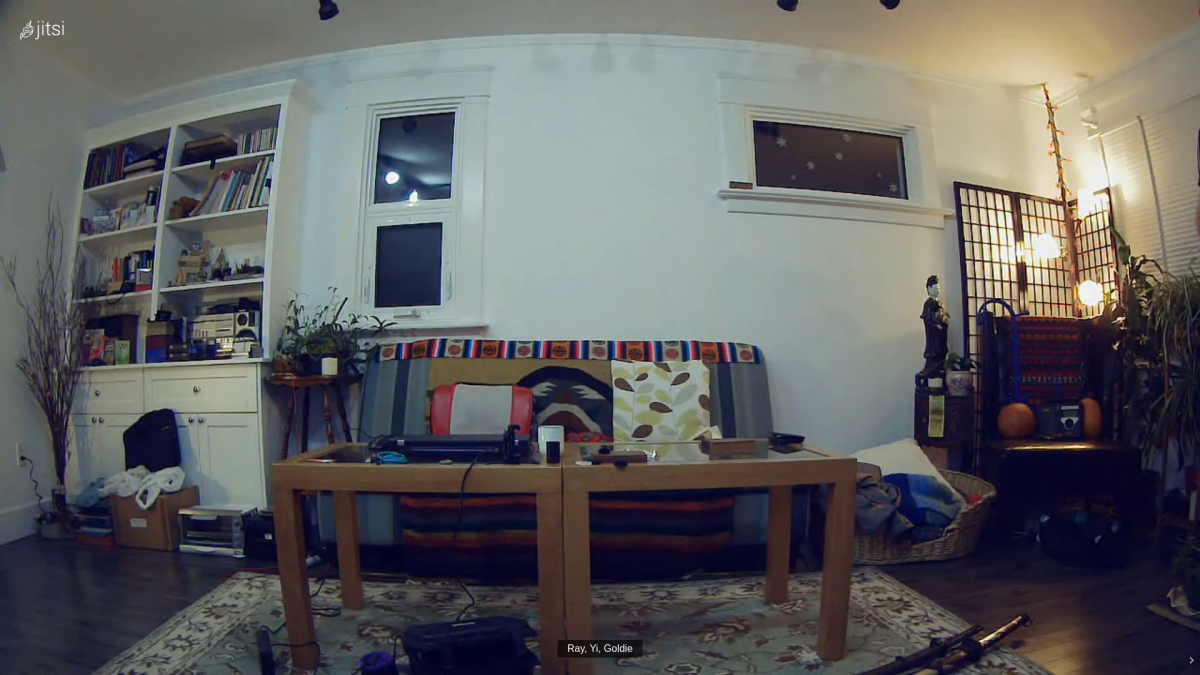
Mokose U70
Resolution: 3840 x 2160
https://www.amazon.com/MOKOSE-Camera-Varifocal-Compatible-Windows/dp/B0814VFG12/ref=cm_cr_arp_d_product_top?ie=UTF8
Price: $158 USD. With shipping and import taxes to Canada, it cost $182 USD or $228 Canadian.
Positive aspects:
The camera accepts CS, C, and M12 mount lenses. The camera case robust and well-manufactured. The U70 is one of the few interchangeable lens web cameras that can deliver a 4k resolution.
Negative aspects:
The Mokose U70 does not include built-in microphones. Also, the model I received had several fairly serious quality control and design problems.
a) Body:
The threads on the lens mount were clearly damaged by cross-threading. This made it difficult to remove and change the lens. Carefully lubricating the threads on the lens largely resolved the problem. This type of damaged product should never be sold to consumers.
b) Lens:
The U70 came packaged with a 6-12mm C-mount lens on a 5mm spacer converter so that it will work with the CS-mount U70 body. The problem is that the 6-12mm C-mount lens cannot achieve focus at the 6mm wide-angle setting for maximum field of view. When I wrote to Mokose about this, they recommended removing the 5mm adapter if I want to use it for the widest field of view. When I followed their advice, removed the adapter, and set the lens to 6mm, the field of view was indeed wide, but the image was surrounded by thick black vignette caused by the lens body. I can only wonder why Mokose would choose to include this 6-12mm lens that does not properly work with this CS-mount body. Clearly the OmniVision OS08A10 (1/1.8 inch) sensor in the camera is very capable, so it seems odd indeed that the company would pair it with a lens that does not properly work with the large sensor.
Clarity and low light:
Image quality on the Mokose U70 ranks as the second highest (Clarity-9). The 4K sensor yields a clear and sharp picture, has very low noise, and works satisfactorily in low light conditions. Overall image quality is considerably better than the Logitech C920, the C930, or the ELP. The Mokose has very good colour rendition, is sharper, clearer.
The Mokose U70’s Omnivision OS08a10 sensor has a surface area of 39mm2 with larger pixels that enable it to achieve 4k resolution with good low-light performance. Suprisingly, the Mokose U70s’s huge sensor and 4K resolution does not provide it with the best performance among the 5 cameras tested. The Kurokesu C2 with its Sony IMX290 sensor with surface area of 18.45mm2 at 1920 x 1080 resolution, delivers low light performance and image quality that is considerably better than the Mokose U70.
A note about the Mokose U70:
Though we liked the Mokose U70, the quality control problems on the camera body, and the company’s poorly-chosen lenses led us to feel that Mokose “sabotaged” the U70, which had the potential to be an outstanding camera. Until the company addresses these quality blunders and includes proper lens for the Mokose U70, we recommend avoiding it. It’s cost is not much less than the Kurokesu C2 which is far superior.
Here’s a few extra photos of the Kurokesu C2 camera!
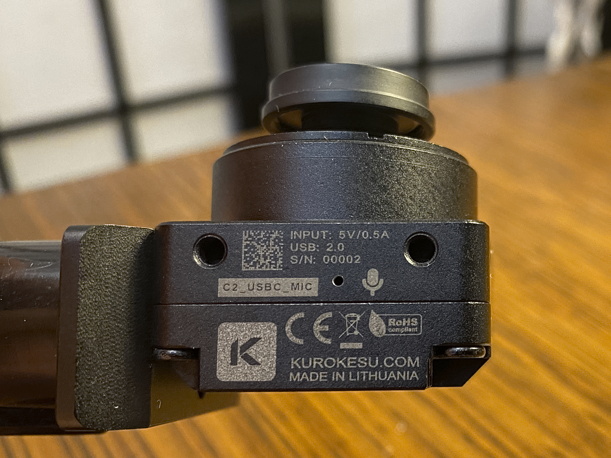
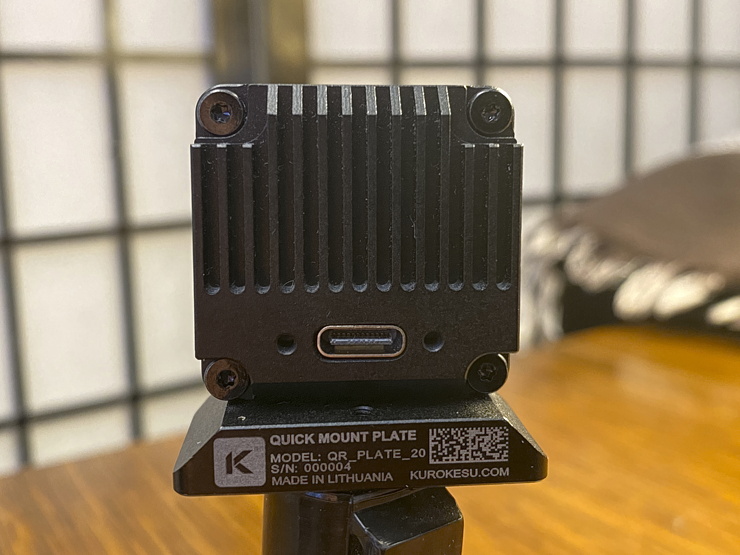
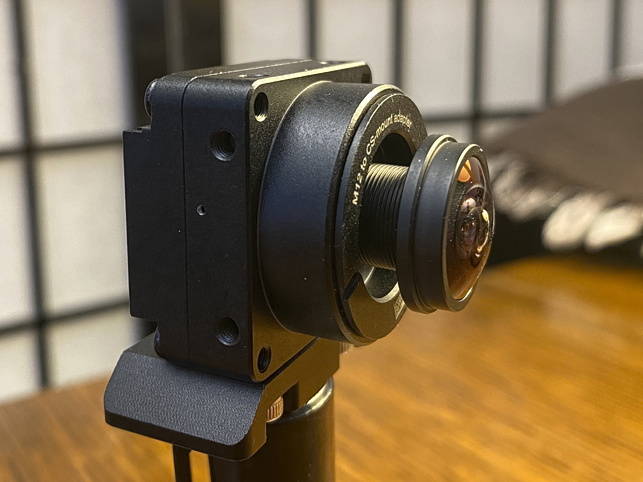
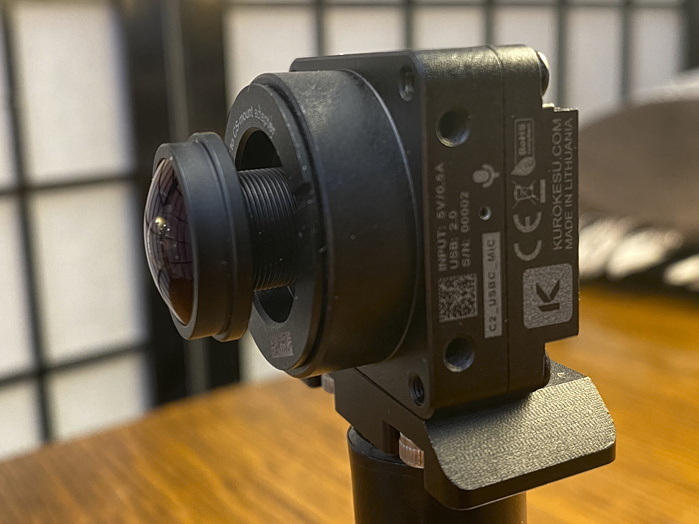
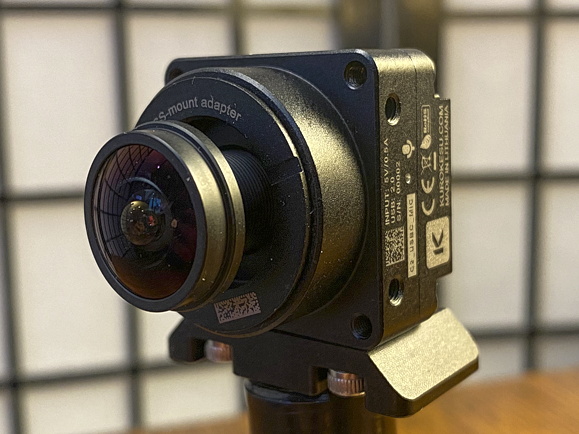
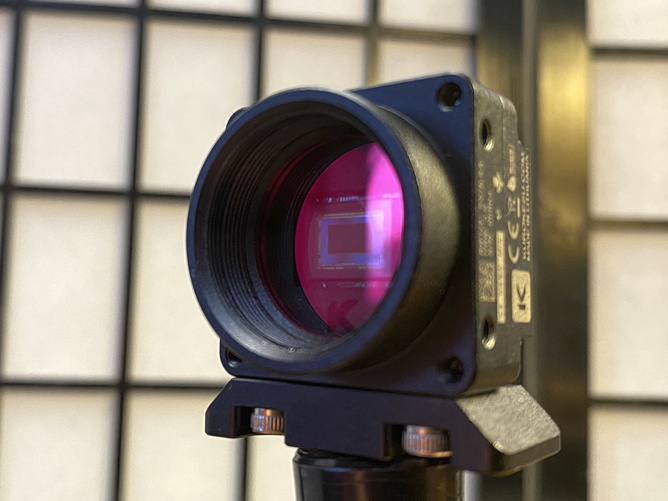
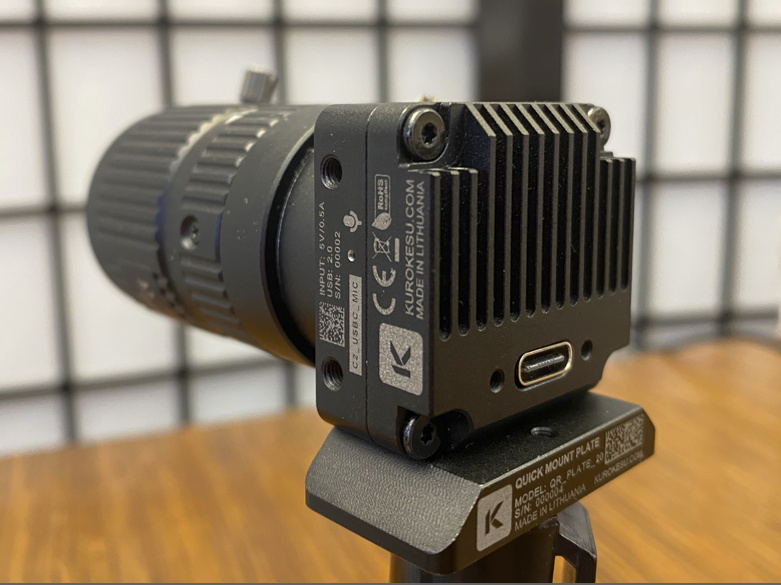

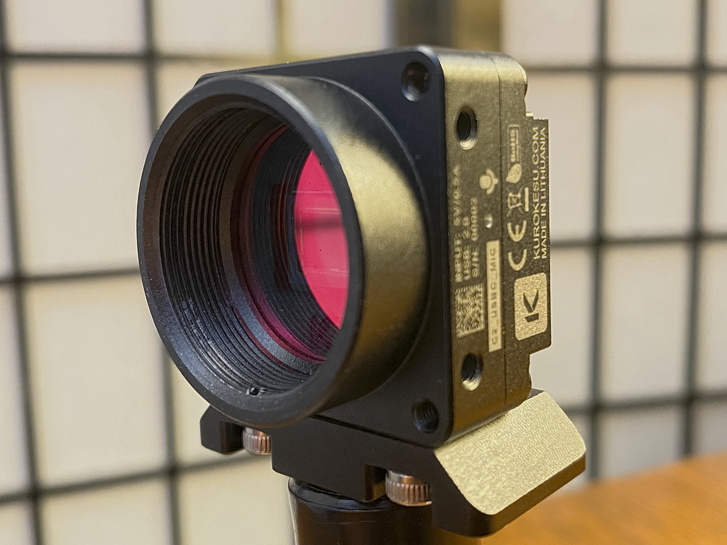
Learn more about the Kurokesu series of cameras here: https://www.kurokesu.com/home/
The proprietor of Kurokesu, Saulius, provided a bit of additional information about the development of the remarkable C2 camera. Kurokesu’s camera design started from the C920 rework kit, a kit created by Kurokesu that allows people to change lenses on Logitech C920 and Brio cameras. More information is available here: https://www.kurokesu.com/shop/diy_kits.
The Logitech C920 was commonly used for computer vision research. It offered MJPEG encoding as well as an h.264 codec and so could record video in limited storage devices for a long time (used by Bosch, MIT). Unfortunately, Logitech silently ditched h.264 on new C920 cameras (C930 still offered this feature). To provide a better computer vision camera and fill a market need, Kurokesu developed the C1 PRO/C2 cameras to address the shortcomings of Logitech C920 and offer better low-light performance in a smaller package. C2 is an updated version of C1 PRO in an even more compact package and completely redesigned circuitry offering even less noise low light.


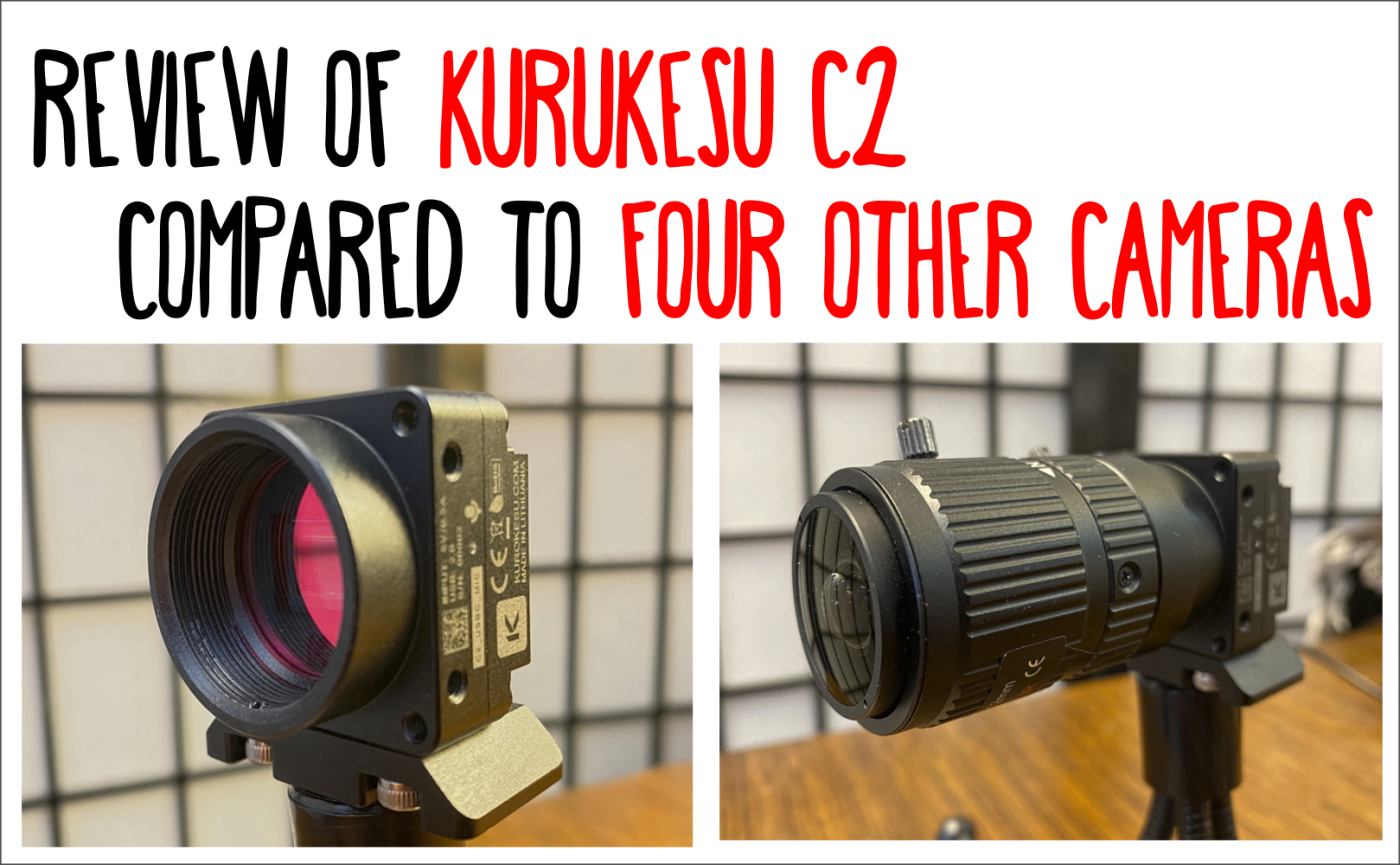
You must be logged in to post a comment.